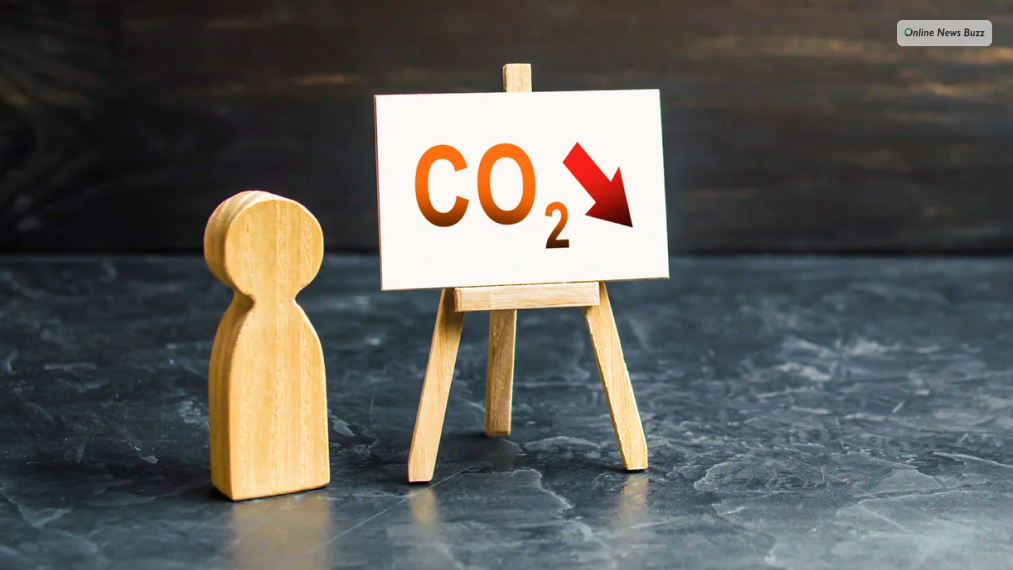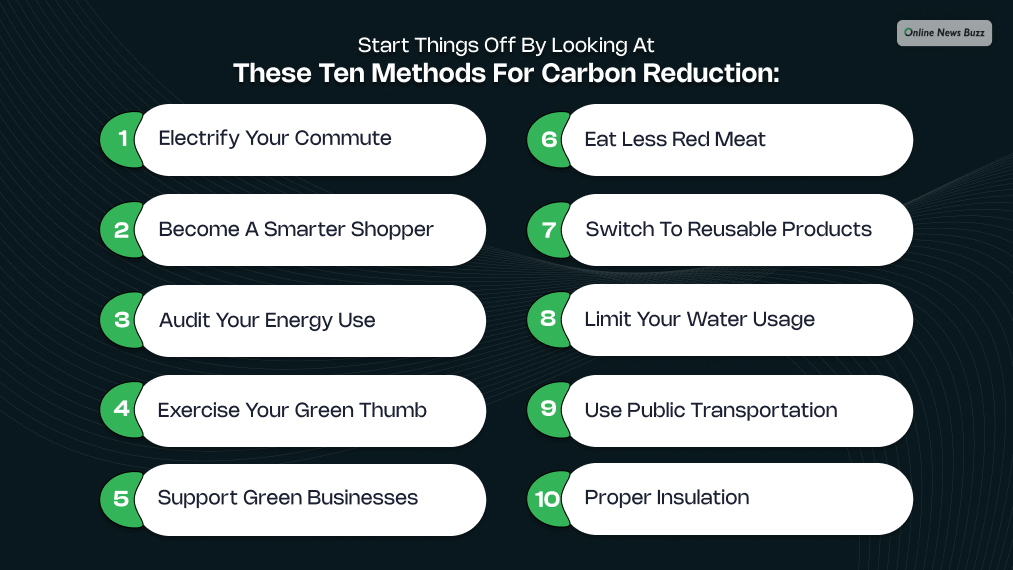
Every day, you contribute to the world’s total carbon emissions. No matter how you cut it, high emissions aren’t good for the environment or public health. Reducing your carbon footprint makes you a model global citizen acting for the greater good.
Luckily, reducing your carbon footprint doesn’t require a complete overhaul of your life. Rather, a few small changes, applied consistently, will have a drastic effect on the size of your carbon footprint.
Start things off by looking at these six methods for carbon reduction:

1. Electrify Your Commute
The largest source of your carbon footprint is likely your driving time. Every day you drive to work, you’re putting out carbon emissions. And when you get stuck in traffic, it only gets worse. You can lower those emissions and the money you spend on gas, by switching to electricity.
Hybrid and electric cars on the rise, promising better gas mileage and fewer trips to refill the tank. Many drivers have made the switch due to the cost savings alone, and the reduced carbon footprint is a happy side effect. There’s nothing wrong with wanting a bit of both.
If a new car isn’t in your budget, an electric bike would suit you just fine. Pedaling to work will give you some daily exercise, and the battery-powered motor will make the commute almost effortless. Best of all, a bicycle produces no emissions, so you’ll be taking a huge chunk out of your carbon footprint.
2. Become a Smarter Shopper
Your shopping habits have a surprisingly big impact on your carbon footprint. This can be easily fixed by adjusting a few small variables. For starters, plan your shopping trips in advance to reduce the distance you drive from store to store. Bring along a reusable bag to limit the amount of plastic waste you generate.
Whenever possible, try to shop local. A lot of emissions come from the delivery trucks that travel hundreds of miles carrying goods to national chains. Shopping local not only supports community businesses, but the goods produced there don’t burn through numerous gallons of gas to get to you.
Last but certainly not least is clothes shopping. Textile waste has reached shocking levels in the U.S., averaging up to 80 pounds of tossed clothing per person! Textiles will sit in landfills and emit methane gas into the atmosphere, which is even worse than carbon for the planet. Instead of throwing your old clothes away, donate them. And don’t be shy about trying an outfit from the thrift store instead of buying new every time.
3. Audit Your Energy Use
Electricity doesn’t appear out of thin air whenever you flick a light switch. The electricity in your home was likely generated by a process using fossil fuels. The more electricity you use, the larger your carbon footprint becomes.
Run an audit of the amount of energy you use at home. Look for ways to reduce it, such as turning lights off when you leave the room or unplugging appliances that aren’t in use. These small changes over time will result in big energy savings.
Large-scale energy projects such as installing solar panels are a more expensive way to reduce your carbon footprint over the long run. Keep it simple in the beginning, and you can make the jump to more ambitious efforts further down the road.
4. Exercise Your Green Thumb
In addition to shopping locally, consider growing some food in your very own garden. The only emissions you’ll produce will come from trips to the garden center or delivering extra tomatoes to friends. You’ll save money on groceries and eat a lot healthier as well.
Planting trees will also offset your carbon footprint. Trees take CO2 from the air and convert it into food and energy. In exchange, they expel the oxygen needed for all other living things to survive. Sounds like a good trade, doesn’t it?
If you live in a big city, you might not have much room to plant a garden. Growing a few plants on your windowsill is still a great start. You can also look for community gardens where residents band together to farm a small plot of land.
5. Support Green Businesses
There are many corporations that have joined the fight to keep the planet clean and healthy. If you plan on spending your money anywhere, you might as well choose them. They contribute a portion of their earnings toward programs and other organizations with a shared goal of keeping carbon emissions to a minimum.
For example, many hotels have started programs to reduce the waste that comes from laundering barely used towels and bed linens. Other companies have gotten even more creative, like Ecosia. This search engine uses ad revenue to plant trees all over the world. So far, they’ve planted over 100 million trees worldwide.
Along with supporting green businesses, consider offering some of your time toward the cause. There are volunteer opportunities with environmental organizations that share the goal of reducing global carbon emissions. Even gathering a small group of people to tend a community garden will make a difference.
6. Eat Less Red Meat
You might not want to hear this, but it’s true. Eating less red meat will significantly lower your carbon footprint. You don’t have to give it up entirely, but consider sacrificing a steak or two for the good of the planet.
One of the biggest reasons that red meat leads to a larger carbon footprint is the deforestation that occurs to create more grazing land. With all the trees getting cut down, the CO2-to-oxygen cycle isn’t as large or effective. The resources used to raise cattle and spur food production also take a toll.
Ready to do your part to save the planet? Even implementing just one of these carbon-reducing methods will begin to have an impact. The sooner you start making the effort, the smaller your carbon footprint will be.
7. Switch to Reusable Products
Single-use items, like plastic straws, water bottles, and bags, contribute a great deal to waste and pollution. Instead of using disposable products, opt for reusable ones.
For instance, keep a metal or glass water bottle on hand for when you’re out and about, use reusable shopping bags at the supermarket, and bring a stainless-steel straw with you when you go out for drinks.
It might not seem like much, but in the long run, it produces less waste and leaves a smaller carbon footprint. Plus, you’ll save some dough (and who doesn’t love that?).
8. Limit Your Water Usage
Believe it or not, your water usage impacts your carbon footprint. Water treatment plants require an enormous amount of energy to function, and the more waste you’re sending their way, the greater your carbon impact.
Do a few small things each day to save water, and you’ll be doing the Earth a favor. Turn off the faucet as you brush your teeth in the morning. Take shorter showers (or be daring and shut off the water while you lather up).
Fix any leaky faucets in your house. Consider buying a low-flow faucet or toilet; they’re quite inexpensive and can save you gallons of water each week.
9. Use Public Transportation
Public transportation is a great way to reduce your carbon emissions. Buses, trains, and carpooling all cut down on the number of vehicles on the road, which means less CO2 emissions from personal vehicles.
If public transportation is available where you live, try using it for longer commutes in particular.
You’ll reduce your carbon footprint as well as lower your gas bill and avoid the stress of driving in traffic.
10. Proper Insulation
Heating and cooling make up a big chunk of the energy usage in your home. This can cause your carbon footprint to be quite large.
To lessen that footprint, you’ll want to make sure that your windows are energy efficient, that you use the proper insulation, and that you’re smart about setting your thermostat.
That means lower in the winter (we like ours at 68 degrees) and higher in the summer. And if being on top of it all isn’t easy for you, consider getting a smart thermostat.
Final Note!
You don’t have to make drastic lifestyle changes to reduce your carbon footprint.
Simple, intentional choices like using reusable everything, being mindful of water consumption, and being aware of how you use energy really add up!
So just be consistent!
Read Also:




























